Royal Gaitore is one of the lesser-explored tourist attractions in Jaipur & presents a spectacular architectural brilliance that a traveler shouldn’t miss. It is referred to as Gaitore Ki Chhatriyan in Hindi. Gaitore has the reputation of being one of the most beautifully constructed and maintained royal cenotaphs in Rajasthan. Every structure has a distinct design and workmanship, which makes it unique. It is still owned by the erstwhile rulers of Jaipur. It’s a calm and peaceful place, away from the hustle and bustle of bazaars of Jaipur. Moreover, it’s a big change in contrast with the touristy Amer Fort.
If you were to search for the word Gaitor or Gaitore/ गैटोर in Hindi dictionary, you are unlikely to find a listing. This word doesn’t have any meaning. Popular opinion assumes that it might have originated from “Gaye ka Thor” (गये का ठौर) in Hindi, which when translated into English means resting place of the departed soul. It is a royal cremation site and the mausoleum of Kacchawa rulers of Jaipur and some people refer it as royal Tumbas.
How To Reach Royal Gaitore Jaipur
Gaitore is in Brahampuri, Jaipur. It is at a foothill with Nahargarh Fort on one side and Garh Ganesh temple on the other side. It houses several tombs and mausoleums of the entire Kacchhawa dynasty that ruled over Jaipur from 1727 AD to 1947 AD barring just one ruler – Maharajah Sawai Ishwari Singh. I found the mausoleum of Maharajah Sawai Madho Singh II and Maharaja Sawai Jai Singh II, most beautiful of all. Across Rajasthan, Rajput rulers used to build chhatris as a remembrance to the deceased rulers. Bada Bagh is another such monument in Jaisalmer constructed using sandstone which has become an important tourist attraction.
Gaitore primarily has chhatris made of white marble. (Chhatris are dome-shaped structures or cupolas). Sandstone has also been used in Some Chhatris. These are one of the finest examples of fusion between Rajput & Mughal architecture spanning 220 years. White marble Chhatris features intricate carvings which are both exquisite and beautiful. I will not delve into history any further. Let me take you on a visual tour of Royal Gaitore in Jaipur.
Follow me on Facebook Twitter Instagram

The above Chhatri belongs to Maharajah Jai Singh II, founder of Jaipur city.
Nahargarh Fort in the background seems to add to its charm.

The cenotaphs dedicated to the later rulers are not as intricate or as big as the previous one say that of Maharajah Sawai Jai Singh II. Probably, this is an indication of the fall in the wealth of state or change in the mindset. Each Chhatri structure is unique in terms of architecture. The below structure is built in Baradari style devoid of the typical Rajput dome or Chhatri structures.
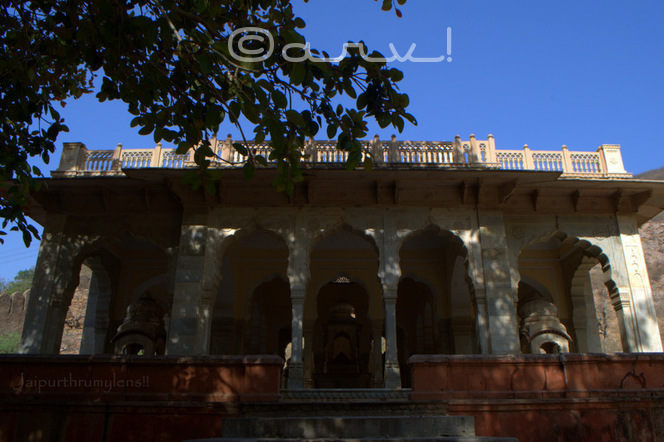
I love the way white marble blends with the pastel yellow color wall.
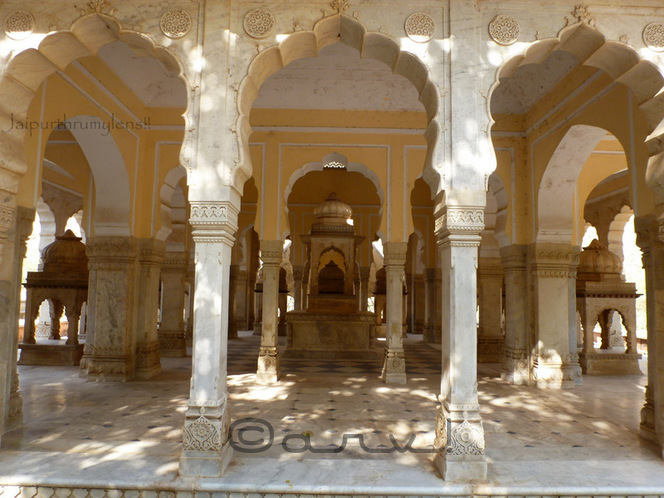
The one below is the most ornate and elaborate of all. This is Maharajah Sawai Madho Singh II Chhatri.

The most ornate and beautiful Chhatri belongs to the Maharajah Sawai Jai Singh II made out of the finest white marble sourced from Makrana in the Jodhpur region.
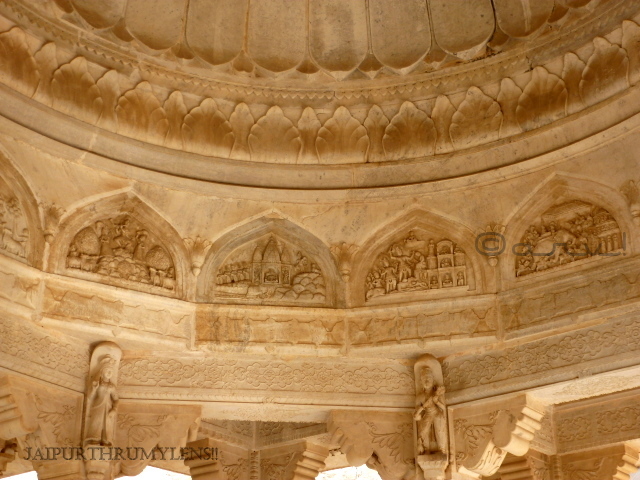
In all this cenotaph is the most exquisite and elaborate of all.
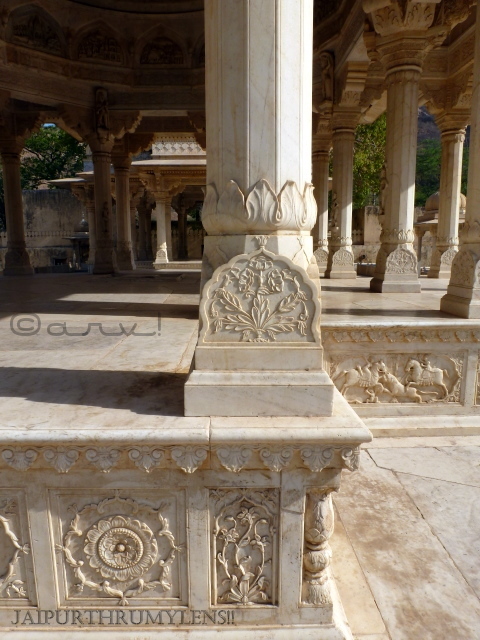

In many ways, this particular structure reminds me of the Albert Hall Museum due to a similarity in architectural styles.

The most recent structures in Gaitore are the ones dedicated to Brig. Sawai Bhawani Singh (1931-2011) the son of the last ruling king of Jaipur. His tombs can be found on the right-hand side from the gate.

Another important cenotaph is of Maharajah Sawai Man Singh II, the last ruler of Jaipur It is located on the left-hand side after the entrance gate. The cenotaph of Brig. Bhawani Singh is a replication of Maharajah Sawai Man Singh II.

Here are a few monochrome pictures of Royal Gaitore.

The entrance gate featured below is not the main entrance to Gaitore. It’s a secondary entrance. I assume this must have been the original gate for this compound but as the requirement of space grew for more cenotaphs and place expanded, the gate was shifted closer towards the city. The main entrance is not as understated as this one.

By the way, are you aware that Jaipur (and Rajasthan state as a whole) is still one of the leading places for stone sculpting & carving? Especially the one which uses white marble and sandstone? Rajasthani stone sculptors are always in demand across the World for stone sculpting work in the temples. Jaipur and Sikandara village are popular places to hunt for Murtis, idols, and sculptures made of white marble and sandstone.

Tips for visiting Gaitore
Clubbing your visit to Royal Gaitore with Garh Ganesh Temple close-by is a good idea. If you’re visiting during the evenings, it makes sense to climb up to the Garh Ganesh temple and enjoy the lovely views of the city and the sunset. Click here to read all write-ups on Garh Ganesh temple, Jaipur
Follow me on Facebook Twitter Instagram
In my opinion, Royal Gaitore is the finest masterpiece of the royal architecture of Jaipur. The kind of detailing & workmanship one get to see here is outstanding. Each structure is architecturally unique. It’s being said that one can experience the changes in architectural styles and patterns by closely observing the structures built over the years. It is definitely worth visiting if you are looking to explore offbeat Jaipur or love architecture and art. It is also recommended for travelers seeking quiet moments and solitude.

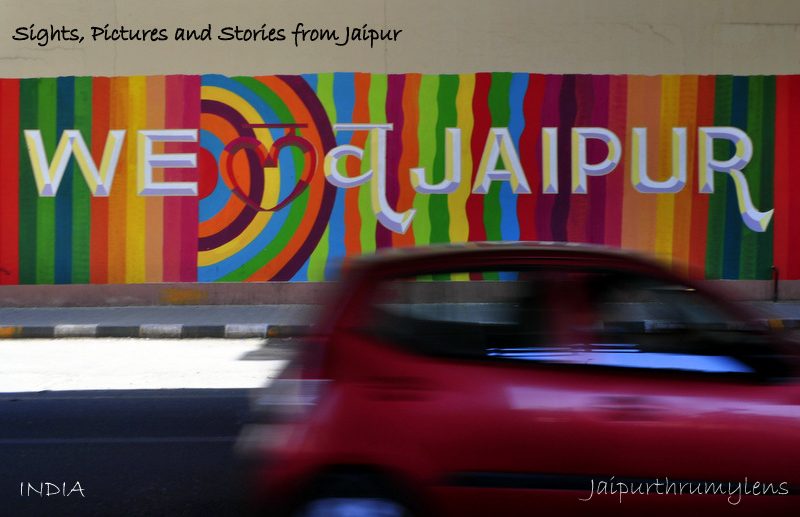




Wow, amazing pictures, and I trully understand it, im from Mexico and there are a lot of underrated pieces of architecture, like this one,
LikeLiked by 1 person
Hi! I checked it out. Did you design this house? Looks quite contemporary and slick in terms of the design
LikeLiked by 1 person
No, its a project I choose from my homecity
LikeLiked by 1 person
ok 🙂
LikeLiked by 1 person
Jaipur is one place that has excited me a lot. The white marbles provide for a unique experience of our architectures. No doubt, rich history we have!
LikeLiked by 1 person
Good to see it again. The white marble used is really a sight in itself!
LikeLiked by 1 person
Certainly, the white marble is symbol of class & luxury which explains why it was favorite of royalty. Also it allows greater freedom in carvings and sculpting.
LikeLiked by 1 person
Love your photos!
LikeLiked by 1 person
Happy to hear this,Ritu
LikeLike
Such beautiful photos! Loved them.
LikeLike
Truly beautiful architecture Arv!
LikeLike
Beautiful place and your photographs have captured the atmosphere. Thanks
LikeLike
Another visual feast!
LikeLike
I am always in awe of the buildings, the talent and work that went into them. thank you for sharing.
LikeLike
Incredible photos, Arv! There is so much history in your country and it’s so beautiful. I hope I can visit it one of these days. 🙂
LikeLike
Thanks for the tour! It’s gorgeous. I love ALL of them!
LikeLiked by 1 person
I’m glad you liked them, Susie.
LikeLike
The architecture is truly magnificent. This is one of these cases where picture is worth a thousand words!
LikeLiked by 1 person
I agree. Thanks for checking it out and sharing your views. Have you ever been to India?
LikeLike